Table of content
Mackerel, a oily fish renowned for its rich flavor and robust texture, is a culinary gem that deserves a place in every kitchen. Its distinct taste, often described as buttery with a hint of brininess, makes it a versatile ingredient for various cooking methods. However, achieving that perfect balance of flavor and aroma requires technique, creativity, and an understanding of the fish’s unique characteristics. This article delves into the secrets of preparing mackerel that is both mouthwatering and fragrant, ensuring every bite leaves a lasting impression.
Understanding Mackerel: A Brief Overview
Before diving into cooking techniques, it’s essential to appreciate what makes mackerel special. Belonging to the Scombridae family, which includes tuna and bonito, mackerel is prized for its high oil content, particularly omega-3 fatty acids. This oiliness not only contributes to its health benefits but also enhances its flavor when cooked properly. Common varieties include Atlantic mackerel, Pacific mackerel, and Spanish mackerel, each with subtle differences in taste and texture.

Mackerel’s flesh is firm and flaky, with a silver-blue skin that turns crispy when seared or grilled. Its assertive flavor pairs well with bold seasonings, citrus, herbs, and spices, making it a canvas for culinary experimentation. However, its strong taste can also be a hurdle for the uninitiated, necessitating careful preparation to avoid overpowering the dish.
Selecting and Preparing Mackerel
The foundation of a great mackerel dish begins with selecting the freshest fish. Look for specimens with bright eyes, shiny skin, and a mild, oceanic scent. Avoid fish with dull eyes, discolored skin, or a strong fishy odor, as these indicate spoilage.
Cleaning and Filleting:
- Scaling: Use a scaling tool or the back of a knife to scrape off the scales under cold running water.
- Gutting: Make a shallow incision along the belly and remove the intestines. Rinse thoroughly.
- Filleting: With a sharp knife, cut along the backbone from head to tail, then gently lift the fillet away. Repeat on the other side.
Optional: Leave the skin on during cooking for added crispiness and flavor.
Cooking Techniques to Elevate Flavor and Aroma
Grilling: Charred Perfection
Grilling mackerel imparts a smoky depth while rendering the skin irresistibly crispy.
Method:
- Marinade: Combine olive oil, minced garlic, lemon zest, chopped herbs (dill, parsley, or thyme), and a pinch of salt. Coat the fish and let it marinate for 20–30 minutes.
- Grill: Preheat the grill to medium-high. Place the mackerel skin-side down and cook for 4–5 minutes per side. Avoid flipping too often to prevent sticking.
- Finish: Baste with the marinade during cooking. Serve with a squeeze of lemon and a sprinkle of fresh herbs.
Pro Tip: For extra crispiness, pat the skin dry before grilling and avoid moving the fish until the skin releases naturally from the grill.
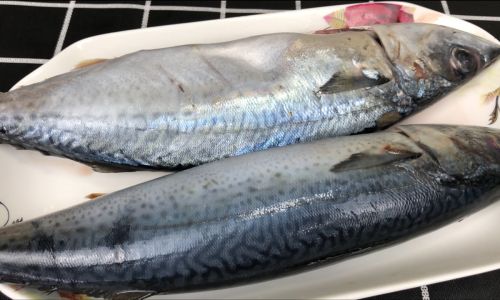
Pan-Frying: Golden and Aromatic
Pan-frying creates a contrast between crispy skin and tender flesh, enhanced by aromatic ingredients.
Method:
- Seasoning: Rub the fish with a mixture of smoked paprika, cumin, black pepper, and a pinch of sugar.
- Pan Preparation: Heat a mix of olive oil and butter in a skillet. Add sliced garlic and a sprig of rosemary to infuse the oil.
- Cook: Place the mackerel skin-side down. Press gently to prevent curling. Cook for 3–4 minutes until golden, then flip and cook for 2 minutes.
- Serve: Drizzle with the infused oil and garnish with lemon wedges.
Variation: Add sliced almonds or capers to the pan during the last minute for a textural crunch.
Baking: Tender and Moist
Baking mackerel in foil or parchment locks in moisture and allows flavors to meld.
Method:
- Stuffing: Fill the cavity with lemon slices, fresh herbs, and thinly sliced fennel.
- Seasoning: Drizzle with olive oil, salt, and pepper. Wrap tightly in foil.
- Bake: Preheat the oven to 400°F (200°C). Bake for 15–20 minutes until the flesh flakes easily.
- Finish: Unwrap and serve with a dollop of herbed yogurt or salsa verde.
Pro Tip: Add a splash of white wine or vermouth to the foil packet for an aromatic lift.
Smoking: Complex and Intense
Smoking mackerel transforms it into a culinary delight with a depth of flavor.
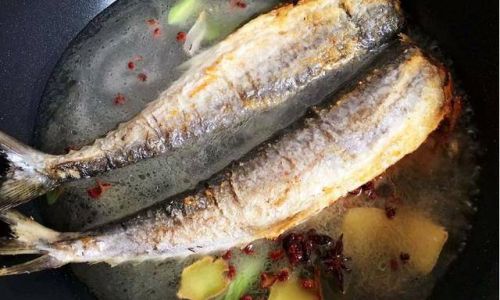
Method:
- Brine: Soak the fish in a mixture of water, salt, sugar, and peppercorns for 4–6 hours.
- Dry: Pat dry and air-dry in the refrigerator for 1 hour to form a pellicle.
- Smoke: Use a smoker set to 150°F (65°C) with wood chips (apple or alder). Smoke for 1–2 hours until the internal temperature reaches 145°F (63°C).
- Serve: Flake the smoked mackerel into salads, pastas, or spreads.
Variation: For a quicker version, use a stovetop smoker with tea leaves and rice for a DIY smoky flavor.
Curing: Preserved Elegance
Curing mackerel in salt and sugar intensifies its umami and texture.
Method:
- Cure Mix: Combine equal parts salt, sugar, and grated lemon zest.
- Layer: Cover the fish fillets in the cure and refrigerate for 2–3 hours.
- Rinse: Wash off the cure and pat dry.
- Serve: Thinly slice and pair with pickled vegetables, rye bread, and mustard.
Pro Tip: Add crushed juniper berries or coriander seeds to the cure for an herbal note.
Enhancing Aroma with Complementary Ingredients
The key to making mackerel truly aromatic lies in pairing it with ingredients that complement its boldness.
- Citrus: Lemon, lime, or yuzu cut through the fish’s richness and add a refreshing zing.
- Herbs: Dill, parsley, cilantro, and fennel fronds enhance freshness.
- Spices: Smoked paprika, cumin, coriander, and mustard seeds add warmth.
- Aromatics: Garlic, ginger, shallots, and leeks infuse depth when sautéed.
- Acid: Vinegar, pickled onions, or capers balance the oiliness.
Example Dish: Mackerel with Cherry Tomato and Basil Salsa
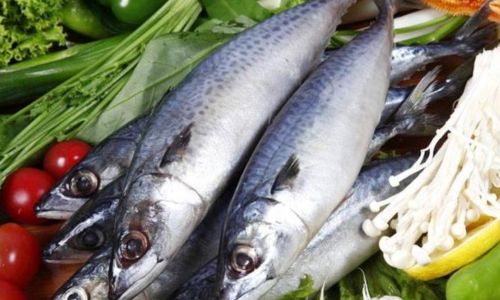
- Salsa: Mix cherry tomatoes, basil, red onion, olive oil, and balsamic glaze.
- Serve: Top grilled mackerel with the salsa and a drizzle of basil oil.
Avoiding Common Pitfalls
- Overcooking: Mackerel’s low fat content can lead to dryness. Cook until the flesh is opaque but still moist.
- Underseasoning: Its bold flavor requires generous seasoning. Don’t shy away from salt, herbs, or spices.
- Ignoring the Skin: Crispy skin is a treasure—ensure it’s well-dried and cooked at high heat.
- Overpowering Pairings: Avoid delicate flavors that get lost. Opt for robust ingredients like roasted peppers or olives.
Health Benefits of Mackerel
Beyond its culinary appeal, mackerel is a nutritional powerhouse:
- Omega-3s: Supports heart and brain health.
- Vitamin B12: Essential for nerve function.
- Selenium: Acts as an antioxidant.
- Protein: Aids in muscle repair and satiety.
Incorporating mackerel into your diet is a flavorful way to boost wellness.
Conclusion
Mackerel’s versatility and depth of flavor make it a rewarding ingredient for home cooks willing to experiment. Whether grilled, smoked, or baked, the key to unlocking its potential lies in balancing its richness with aromatic ingredients and precise cooking techniques. By embracing its bold character and pairing it with complementary flavors, you can transform this humble fish into a dish that is both unforgettable and utterly delicious. So, the next time you encounter mackerel at the market, seize the opportunity to create a culinary masterpiece that tantalizes the senses and nourishes the body.



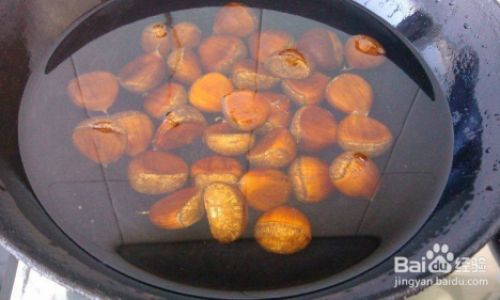
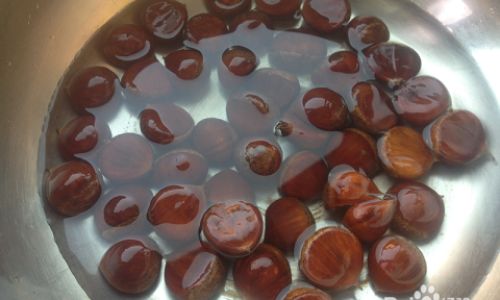
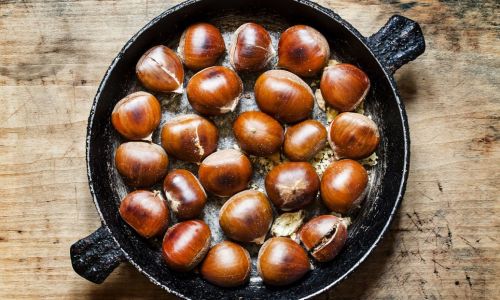
0 comments